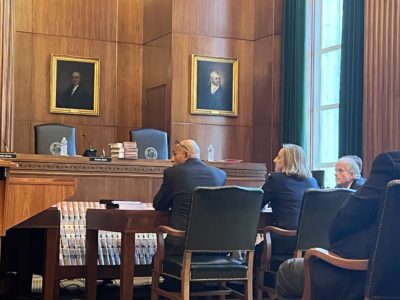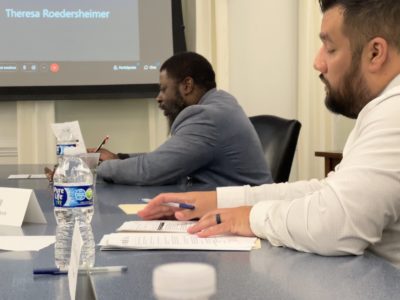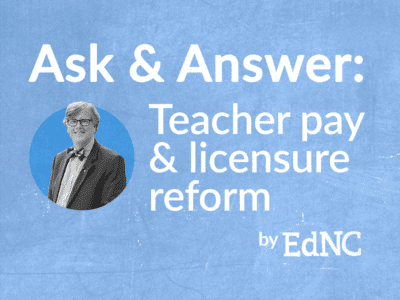
A lengthening procession of education policy proposals awaits the next North Carolina General Assembly, whose 170 members will be elected between Oct. 20 when early voting opens and Nov. 8 when the polls close. The moment begs the question: To what extent can voters exert their power at the ballot box to influence education legislation?
First, consider that the 2023 legislative session will take place in the aftermath of a pandemic from which educators and students are still recovering. Consider also the daunting issues arising from an impending state Supreme Court ruling and from an array of commissions, committees, and task forces.
The Leandro comprehensive remedial plan remains a central point of contention between and among the Supreme Court, the Republican-majority legislature, and Democratic Gov. Roy Cooper. Embedded in the case are such big issues as support for low-wealth schools, enhancement of pre-K and early child care, and teacher pay, quality, and supply.
As a general rule through North Carolina history, the governor usually initiates major education reforms. The legislature, then, responds to proposals made by the governor as well as by agencies and advocates. For the past six years, government divided between a Democratic governor and a Republican legislature hasn’t always fit the general rule. Still, within that context, here is an incomplete but illustrative list of panels with proposals likely to come before the legislature.
The Commission on Access to Sound Basic Education, appointed by Cooper, drafted a plan that has helped shape the governor’s budget proposals. Cooper also appointed the DRIVE Task Force to recommend ways to increase educator diversity.
The state House has a Select Committee on an Education System for North Carolina’s Future. And there is a House Select Committee on Women in STEM.
The Department of Public Instruction has an advisory commission on revising school performance grades. In addition, the Professional Educator and Standards Commission, created by a Senate bill in 2017, is developing a sweeping proposal on teacher licensure and pay.
As a matter of democratic principles, voters have power at the ballot box, and the outcome of competitive politics should bring about responsive government. Of course, actual practice often falls short of ideals. In 2022, what power do individual voters have to influence education legislation emanating from the court and commissions? Frankly, not a lot.
After all, each voter takes part in only two legislative districts, one House, one Senate. This year, moreover, most voters will cast ballots in districts having been drawn to assure a Democratic or Republican victory.
The current party lineup in the House is 51 Democrats and 68 Republicans with one vacancy created by a retired Republican. The Senate has 22 Democrats and 28 Republicans. The general election campaign has played out on the premises that Democrats have slim-to-no chance of regaining a majority and that Republicans have a super-majority within reach. To accumulate a majority to enable them to override the governor’s vetoes, Republicans would need 72 House seats and 30 Senate seats.
Ballotpedia, the election monitor website, rates both the North Carolina House and Senate as “battleground” chambers, with Democrats having a modest chance of winning a majority. And yet, Ballotpedia’s data tell a fuller story — of an election with few genuinely competitive districts. Its listing of races shows that 28 House Republicans and eight House Democrats have no opponent; in the Senate, 13 Republicans and one Democrat have no opponent.
Like Ballotpedia, the Civitas Center of the John Locke Foundation calculates that there are four toss-up Senate districts and six such House districts. Thus, out of 170 legislative elections, only 10 are seen as giving neither party a distinct advantage. You can identify the toss-up elections by their outpouring of TV commercials.
More generously, Civitas suggests “there could also be a few surprises on November 8.” Its analysis also combines the “toss-up” districts with “lean Democratic” districts to add up to 28 districts that “will likely determine the balance of power in Raleigh.”
As usual, voter turnout will be driven largely by the U.S. Senate race at the top of the ballot, and not so much by legislative races. The upshot is that education issues will arrive next year in a General Assembly still reflecting the powerful partisan currents flowing through the electorate and governments in the state and nation. As a result, public education will need strong advocacy through both solid data and persuasive telling of stories of schools, educators, and students.
Recommended reading



